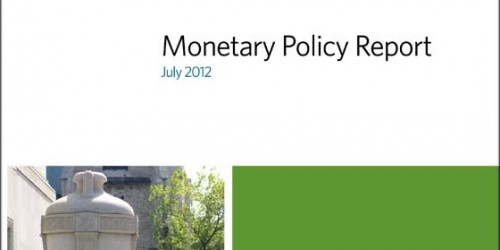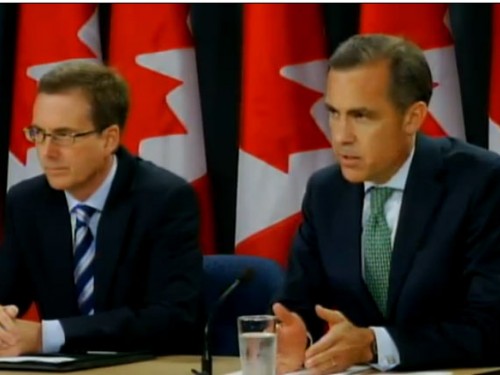Release of the Monetary Policy Report
Available as:
PDF
Good morning. Tiff and I are pleased to be here with you today to discuss the July Monetary Policy Report, which the Bank published this morning.
- Global growth prospects have weakened since the Bank released its April MPR. The economic expansion in the United States continues at a gradual but somewhat slower pace, while developments in Europe point to a renewed contraction.
- In China and other emerging economies, the deceleration in growth has been greater than anticipated, reflecting past policy tightening and weaker external demand.
- This slowdown in global activity has led to a sizeable reduction in commodity prices, although they remain elevated. The combination of increasing global excess capacity over the projection horizon and reduced commodity prices is expected to moderate global inflationary pressures.
- Global financial conditions have also deteriorated since April, with periods of considerable volatility.
- While global headwinds are restraining Canadian economic activity, domestic factors are expected to support moderate growth in Canada. The Bank expects the economy to grow at a pace roughly in line with its production potential in the near term, before picking up through 2013.
- Consumption and business investment are expected to be the primary drivers of growth, reflecting very stimulative domestic financial conditions. However, their pace will be influenced by external headwinds, notably the effects of lower commodity prices on Canadian incomes and wealth, as well as by record-high household debt. Housing activity is expected to slow from record levels.
- Government spending is not projected to contribute to growth in 2012. It is expected to contribute only modestly thereafter, in line with plans to consolidate spending by federal and provincial governments.
- Canadian exports are projected to remain below their pre-recession peak until the beginning of 2014. This reflects the dynamics of foreign demand and ongoing competitiveness challenges, including the persistent strength of the Canadian dollar.
- The Bank projects that the economy will grow by 2.1 per cent in 2012,
2.3 per cent in 2013 and 2.5 per cent in 2014. The economy is expected to reach full capacity in the second half of 2013, thus operating with a small amount of slack for somewhat longer than previously anticipated. - Core inflation is forecast to remain around 2 per cent over the projection horizon as the economy operates near its production potential, growth in labour compensation stays moderate and inflation expectations remain well anchored. Given the recent drop in gasoline prices and with futures prices suggesting persistently lower oil prices, the Bank expects total CPI inflation to remain noticeably below the 2 per cent target over the coming year before returning to target around mid-2013.
- The inflation outlook in Canada is subject to significant risks.
- The three main upside risks to inflation in Canada relate to the possibility of higher global inflationary pressures, stronger Canadian exports and stronger momentum in Canadian household spending.
- The three main downside risks to inflation in Canada relate to the European crisis, weaker global momentum and the possibility that growth in Canadian household spending could be weaker.
- Overall, the Bank judges that the risks to the inflation outlook in Canada are roughly balanced over the projection period.
- Reflecting all of these factors, the Bank yesterday maintained the target for the overnight rate at 1 per cent. To the extent that the economic expansion continues and the current excess supply in the economy is gradually absorbed, some modest withdrawal of the present considerable monetary policy stimulus may become appropriate, consistent with achieving the
2 per cent inflation target over the medium term. The timing and degree of any such withdrawal will be weighed carefully against domestic and global economic developments.
With that, Tiff and I would be pleased to take your questions.


